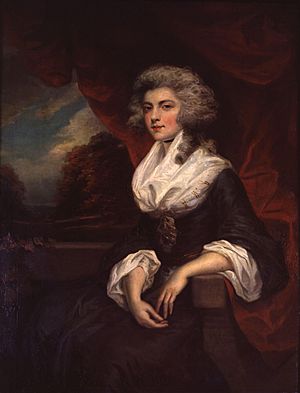John Westbrooke Chandler facts for kids
John Westbrooke Chandler (born around 1763 or 1764, died 1807) was a talented British artist. He was known for his paintings and also wrote poetry. His work shows the style of many famous artists from his time.
Contents
The Life of John Westbrooke Chandler
John Westbrooke Chandler was the son of a very important person, the Earl of Warwick. It's believed his father was George Greville, 2nd Earl of Warwick. This connection was very helpful for Chandler's art career.
Becoming an Artist
In 1784, when he was 21 years old, Chandler started studying art at the Royal Academy Schools in London. This was a big step for any young artist. From 1787 to 1791, he showed his paintings at the Royal Academy's art shows. He mostly painted portraits of people and 'fancy pictures,' which were often imaginative scenes.
Chandler's Painting Style
Chandler's surviving paintings show that he was inspired by many famous artists of his time. These included well-known painters like Joshua Reynolds, George Romney, John Hoppner, and Thomas Lawrence. Later in his life, Chandler also painted landscapes, which are pictures of nature, but sadly, none of these have survived today.
Support from the Earl of Warwick
The Earl of Warwick, who was likely Chandler's father, gave him a lot of support. The Earl probably let Chandler use art studios at Warwick Castle. This would have been a fantastic place for an artist to work and find inspiration.
Later Years and Legacy
Around 1800, Chandler traveled to Aberdeenshire in Scotland, where he painted many portraits. After that, he settled in Edinburgh. He spent his final years living in Stroud, a town in Gloucestershire, England. It is said that he painted his last pictures for people living in that area.
Chandler also became friends with William Godwin, a famous writer and thinker. Chandler even painted Godwin's portrait, which you can now see at the Tate Britain art museum.
Chandler as a Poet
In 1800, John Westbrooke Chandler also wrote a poem called 'Sir Hubert.' It was a 'neo-gothic ballad,' which means it was a story poem with a medieval, slightly mysterious feel. He dedicated this poem to the Earl of Warwick. The poem ends with a joust, which is a knightly combat. It's very possible that the grand Warwick Castle inspired this exciting medieval tale.



